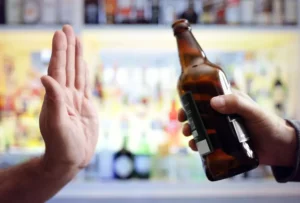
Others, such as anticonvulsants, barbiturates, adrenergic drugs, and GABA agonists have been tried and have evidence. Symptom triggered regime is favoured over fixed tapering dose https://ecosoberhouse.com/boston-sober-house-roxbury/ regime, although monitoring through scales is cumbersome. This article aims to review the evidence base for appropriate clinical management of the alcohol withdrawal syndrome.
Medications for Alcohol Withdrawal Symptoms
- Symptoms of alcohol withdrawal tend to peak 24 to 72 hours after your last drink.
- The occurrence of seizures during the AWS is indicative of severe alcohol withdrawal, although the CIWA-Ar score may not correlate.
- Patients presenting in mild alcohol withdrawal may be treated on an outpatient basis, provided that no underlying conditions require inpatient treatment.
- Pexacerfont treatment did not show any positive effects on alcohol craving, emotional responses and anxiety (Kwako et al., 2015).
- In the present article, we have focused on the existing medications and the repurposing of the FDA approved medications for the prevention and treatment of AUDs with a list of potential medication candidates, as summarized in Figures -1 & -2, and Tables -1 & -2.
Also, AAFP recommends teaching teens between 12 and 17 years old to avoid alcohol. Because withdrawal from cocaine and amphetamine results in sedation and a state resembling adrenergic blockade, death occurs less often from this withdrawal than from acute intoxication. Tolerance occurs when long-term use of a substance produces adaptive changes so that increasing amounts of the substance are needed to produce an effect. Tolerance depends on the dose, duration, and frequency of use and is the result of pharmacokinetic (metabolic) or pharmacodynamic (cellular or functional) adaptation.
Taking Medicines Safely after Alcohol or Drug Abuse Recovery
The drug combination strategy appears promising for AUD treatment and other behavioral deficits. The following medications are in different phases of clinical trials and have a great potential for the treatment of the AUD (Figure -2). Venlafaxine, marketed as Effexor, Effexor XR, Lanvexin, Viepax and Trevilor, is used as an antidepressant medication. This medicine belongs alcoohol is better than drugs to an SNRI group of inhibitors (Muth et al., 1986; Yardley et al., 1990; Bymaster et al., 2001) that increase the concentrations of the neurotransmitters serotonin and NE in the body and the brain. Currently it is used for the treatment of MDD, generalized anxiety disorder (GAD), panic disorder and social phobia (Joint Formulary Committee, 2013; Rossi, 2013).
Alcohol Withdrawal Syndrome: Benzodiazepines and Beyond

In a preliminary RCT by the first author in 2002, Baclofen also reduced craving in alcohol-dependent patients [69]. A study found that the efficacy of Baclofen in treatment of uncomplicated AWS was comparable to that of the “gold standard” diazepam, with significantly decreased CIWA-Ar scores [70]. Reoux et al., and Malcolm et al., concluded that Valproic acid significantly affects the course of alcohol withdrawal and reduces the need for treatment with a benzodiazepine [61,62]. These two double-blind, randomized studies showed that patients treated with Valproic acid for 4 to 7 days dropped out less frequently, had less severe withdrawal symptoms including fewer seizures, and required less oxazepam than patients receiving either carbamazepine or placebo. Although effective, Valproic acid use may be limited by side effects—somnolence, gastrointestinal disturbances, confusion, and tremor—which are similar to alcohol withdrawal symptoms, making assessment of improvement difficult.
- Globally alcohol consumption has increased in recent decades, with most of the increase in developing countries.
- You’ll likely begin to feel better between five to seven days after you stop drinking, though some symptoms—like changes in sleep patterns, fatigue, and mood swings—can last for weeks or months.
- Adult mice were chronically exposed to ethanol and upon withdrawal examined for the behavioral signs of seizure activity such as handling-induced convulsions (HIC) or abnormalities in EEG activity recorded from cortical and subcortical regions.
- Third, in one clinical study, alcohol was inferior to the benzodiazepine, chlordiazepoxide [38].
- Improved medications for the treatment of binge, chronic alcohol drinking and alcohol related socio-medical problems are greatly needed.
There are several mild to moderate psychological and physical symptoms you might experience when you stop drinking. This article discusses the causes, common symptoms, and different stages of alcohol withdrawal. It also discusses various treatment options for alcohol withdrawal and how you can get help.
MODERATE SYMPTOMS (CIWA-AR SCORE OF 10 TO 18 OR SAWS SCORE GREATER THAN

